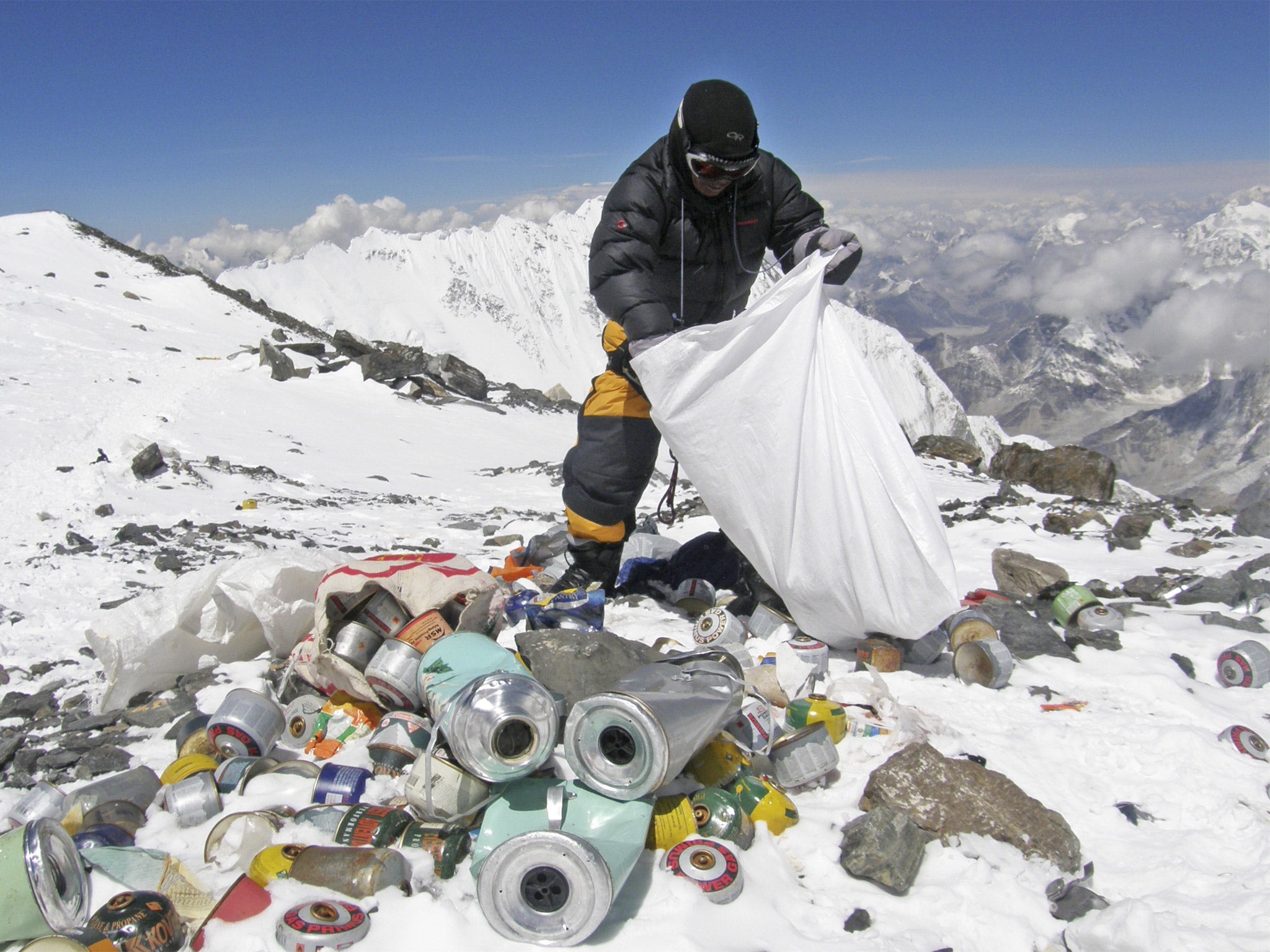Human waste left by climbers on Mount Everest is causing pollution and could spread diseases
Waste has been building up for four years

Your support helps us to tell the story
From reproductive rights to climate change to Big Tech, The Independent is on the ground when the story is developing. Whether it's investigating the financials of Elon Musk's pro-Trump PAC or producing our latest documentary, 'The A Word', which shines a light on the American women fighting for reproductive rights, we know how important it is to parse out the facts from the messaging.
At such a critical moment in US history, we need reporters on the ground. Your donation allows us to keep sending journalists to speak to both sides of the story.
The Independent is trusted by Americans across the entire political spectrum. And unlike many other quality news outlets, we choose not to lock Americans out of our reporting and analysis with paywalls. We believe quality journalism should be available to everyone, paid for by those who can afford it.
Your support makes all the difference.Nepal officials are warning human waste being left by climbers on Mount Everest is causing pollution and could spread disease on the world’s highest peak.
The 700 climbers and guides who spend nearly two months on Everest's slopes each climbing season leave large amounts of feces and urine, according to Ang Tshering, the chief of Nepal's mountaineering association.
At the base camp, where there are more porters, cooks and support staff during the climbing season, there are toilet tents with drums to store the waste. Once filled, the drums are carried to a lower area, where the waste is properly disposed.
Climbers then spend weeks acclimatising around the four camps set up between the base camp at 5,300 meters (17,380 feet) and the 8,850-meter-high (29,035-foot-high) summit. The camps have tents and some essential equipment and supplies, but do not have toilets.
Mr Tshering says this means the human waste being deposited in holes dug in the snow has been piling up for the last four years.
Dawa Steven Sherpa, who leads Everest cleanup expeditions, said the result is “a health hazard and the issue needs to be addressed”.
Puspa Raj Katuwal, the head of the government's Mountaineering Department, said the Nepalese Government has yet to develop a strategy for tackling the amount of human waste left by climbers.
However, the government has imposed new rules last year requiring each climber to bring down to the base camp 8 kilograms (18 pounds) of trash — the amount it estimates a climber discards along the route.
Climbing teams must leave a $4,000 (£2, 600) deposit that they lose if they don't comply with the regulations.
Additional reporting by Associated Press
Join our commenting forum
Join thought-provoking conversations, follow other Independent readers and see their replies
Comments